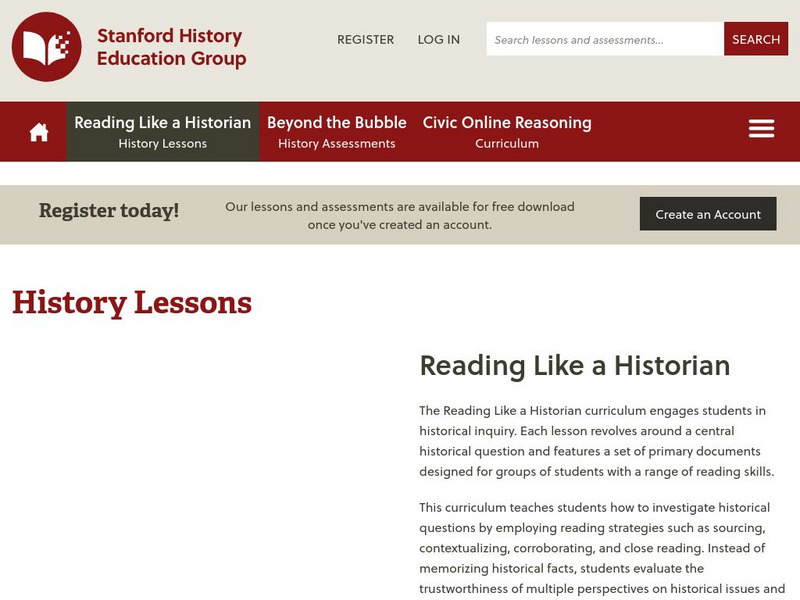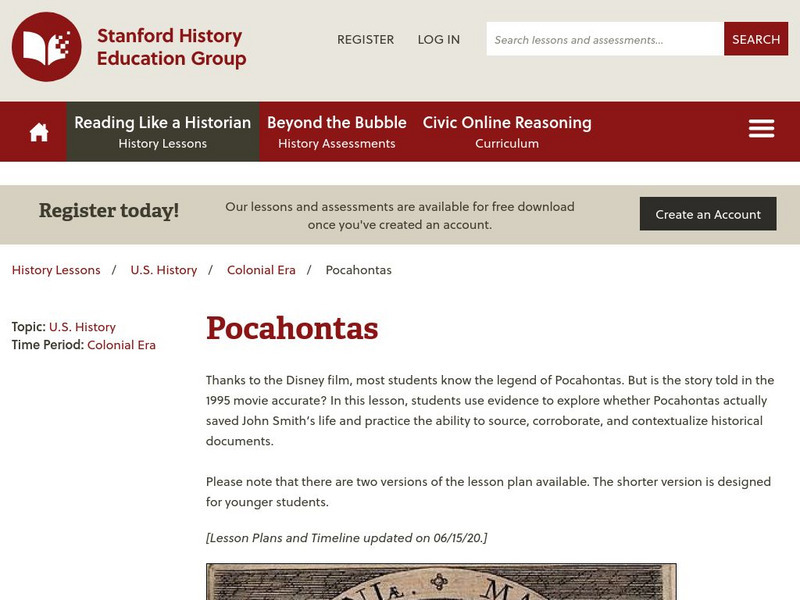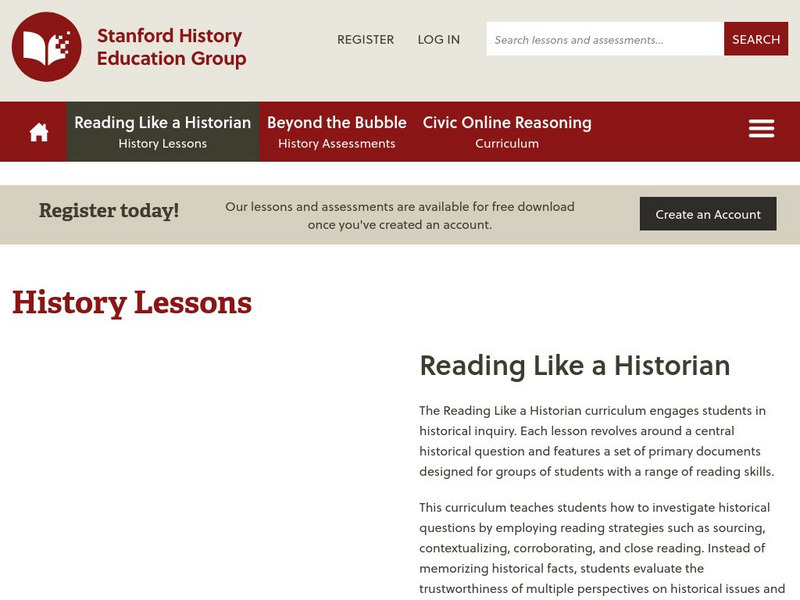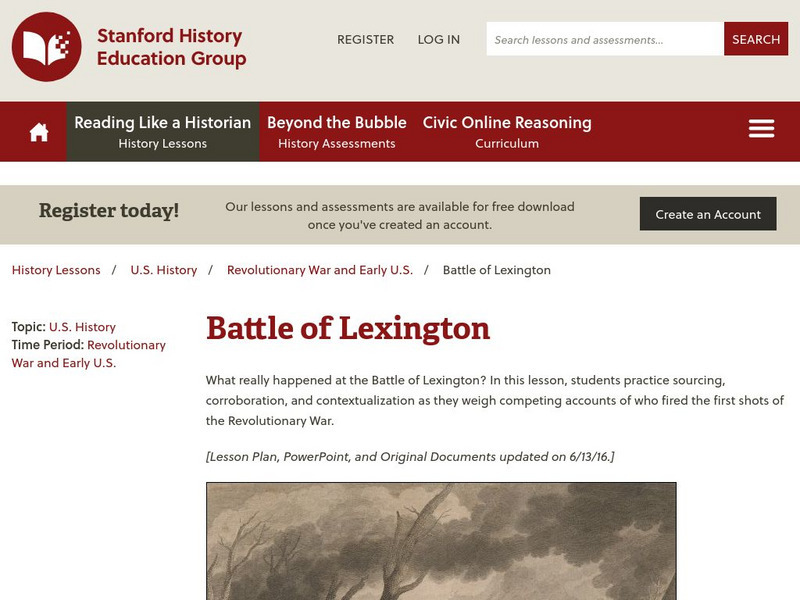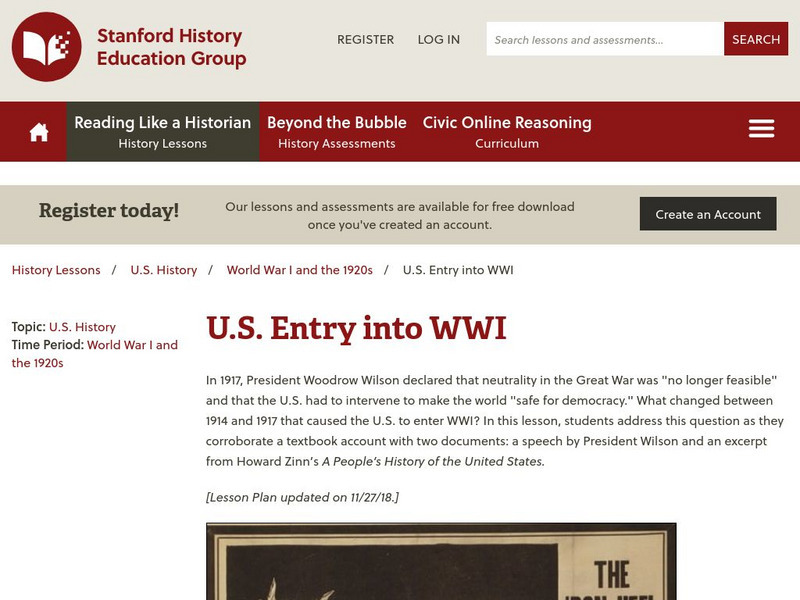Curated OER
The Two Sides of the Declaration of Independence
Budding historians read six documents related to grievances that led to the writing of the Declaration of Independence. They then craft an essay in which they discuss the perspective of both the colonists and the king. This DBQ could be...
Student Handouts
Letter from Christopher Columbus to Luis de Sant Angel Announcing His Discovery (1493)
When Christopher Columbus landed, he found many things to comment on. Have your class read this letter that he wrote to Luis de Sant Angel in 1493. The text is split up into sections. Each section is paired with two to three...
Curated OER
2001 AP® United States History Free-Response Questions
Rigorous and challenging, the AP Test for AP United States History contains a document-based question (with nine documents), as well as two additional free-response questions. Students who are preparing for the test will appreciate the...
Curated OER
How To Do an AHAP DBQ
How is an essay like a hamburger? Detailing the "meaty" parts of a well-written essay, this presentation takes students through the process of using a strong thesis statement to write a thorough and engaging response to a Document Based...
Curated OER
How To Do an AP Euro DBQ
Are your AP classes struggling with Document Based Questions? Nip their problems in the bud with this clear and comprehensive presentation, which compares a "dazzling DBQ" to a hamburger, outlining all of the layers therein....
Curated OER
Crisis in Darfur
High school social studies teachers addressing the crisis in Darfur could use elements of this plan to increase social studies vocabulary and research skills. It includes a page of lecture/discussion notes, instructions for creating...
Other
Dbq Theme: Slavery in the United States [Pdf]
A Grade 8 writing assignment on slavery. Students examine nine different primary source documents and answer questions about each. After completion, they would be asked to write an essay. This task uses the method called DBQ or...
Stanford University
Sheg: Document Based History: Reading Like a Historian: Early America
[Free Registration/Login Required] The Revolution and Early America unit covers the standard eighteenth century topics that would appear in any textbook. These lessons, however, will push students to dig deeper as they read the documents...
Stanford University
Sheg: Document Based History: Reading Like a Historian: Pocahontas
[Free Registration/Login Required] Students use primary source documents to investigate central historical questions. In this investigation, students use evidence to explore whether Pocahontas actually saved John Smith's life and...
Stanford University
Sheg: Document Based History: Read Like a Historian: Civil War Reconstruction
[Free Registration/Login Required] In the Civil War and Reconstruction unit, learners engage in contentious historiographic debates about the period: Was Lincoln a racist? Was Reconstruction a success or failure? Was John Brown a...
Stanford University
Sheg: Document Based History: Reading Like a Historian: Battle of Lexington
[Free Registration/Login Required] Learners solve a problem surrounding a historical question by reading primary source documents. This historical inquiry lesson allows students to practice sourcing, corroboration, and contextualization...
Stanford University
Sheg: Document Based History: Reading Like a Historian: Thomas Nast
[Free Registration/Login Required] Students read primary source documents to solve a problem surrounding a historical question. This document-based inquiry lesson allows students to analyze two cartoons drawn by Thomas Nast, and to chart...
Stanford University
Sheg: Document Based History: Reading Like a Historian: American Imperialism
[Free Registration/Login Required] The American Imperialism Unit covers the Spanish-American War and the Philippine-American War. The lessons approach historical inquiry from different angles. One asks students to consider contrasting...
Stanford University
Sheg: Document Based History: Reading Like a Historian: Philippine American War
[Free Registration/Login Required] Students read primary source documents to solve a problem surrounding a historical question. This document-based inquiry lesson plan allows students to examine how advocates and critics of American...
Stanford University
Sheg: Document Based History: Reading Like a Historian: The Gilded Age
[Free Registration/Login Required] Students read primary source documents to solve a problem surrounding historical questions. The Gilded Age unit highlights the turbulent changes that characterized the end of the nineteenth century.
Stanford University
Sheg: Document Based History: Reading Like a Historian: Spanish American War
[Free Registration/Login Required] Learners use primary source documents to investigate central historical questions. In this investigation students study the Spanish-American War by watching a documentary video, reading a telegram...
Stanford University
Sheg: Document Based History: Reading Like a Historian: u.s. Entry Into Wwi
[Free Registration/Login Required] In this historical inquiry lesson, students address the question, "What changed between 1914 and 1917 that caused the U.S. to enter WWI?" to corroborate a textbook account with two documents: a speech...
Stanford University
Sheg: Document Based History: Reading Like a Historian: Progressivism
[Free Registration/Login Required] Students use primary source documents to investigate central historical questions. This unit explores perspectives on the key issues of the Progressive Era.
Stanford University
Sheg: Reading Like a Historian: Booker T. Washington vs w.e.b. Du Bois
[Free Registration/Login Required] Students read primary source documents to solve a problem surrounding a historical question. This document-based inquiry lesson allows students to read a speech of Booker T. Washington's and a selection...
Stanford University
Sheg: Document Based History: Reading Like a Historian: Historical Thinking
[Free Registration/Login Required] This chart elaborates on the historical reading skills of sourcing, corroboration, contextualization, and close reading. In addition to questions that relate to each skill, the chart includes...
Stanford University
Sheg: Document Based History: Reading Like a Historian: Louisiana Purchase
[Free Registration/Login Required] Students read primary sources to solve a problem surrounding a historical question. For this document-based inquiry lesson, a timeline of the Louisiana Purchase along with letters by Federalist leaders...
Stanford University
Sheg: Document Based History: Reading Like a Historian: Manifest Destiny
[Free Registration/Login Required] Students use primary source documents to investigate central historical questions. In this investigation students use nineteenth-century maps and art, and consider the roots of American exceptionalism.
Stanford University
Sheg: Document Based History: Reading Like a Historian: Mapping the New World
[Free Registration/Login Required] Students read primary source documents to solve a problem surrounding a historical question. This document-based inquiry lesson allows students study two 17th-century maps of Virginia and think...
Stanford University
Sheg: Document Based History: Reading Like a Historian: Radical Reconstruction
[Free Registration/Login Required] Students use primary source documents to investigate central historical questions. In this investigation students read speeches by Thaddeus Stevens and Andrew Johnson in order to explore why the Radical...






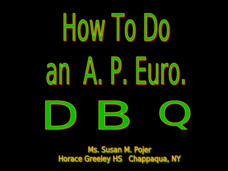

![Dbq Theme: Slavery in the United States [Pdf] Activity Dbq Theme: Slavery in the United States [Pdf] Activity](https://d15y2dacu3jp90.cloudfront.net/images/attachment_defaults/resource/large/FPO-knovation.png)
